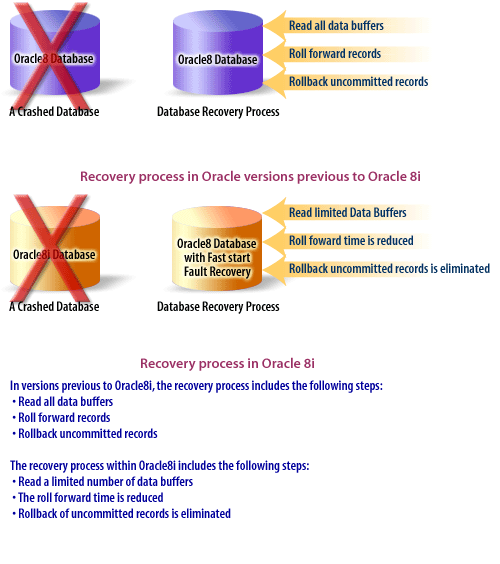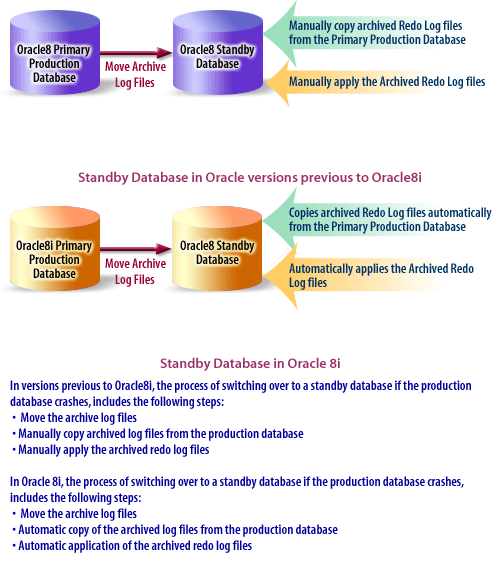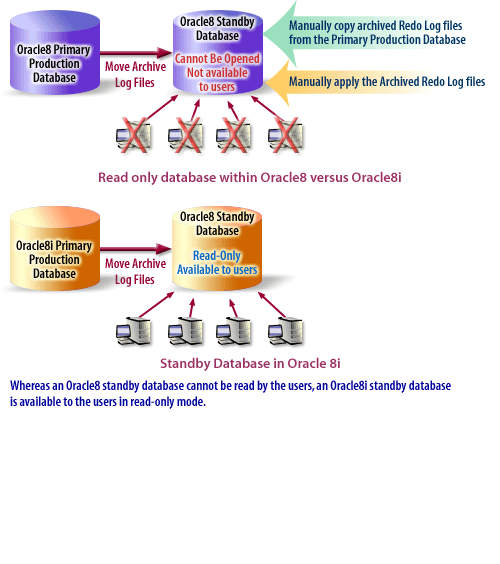| Lesson 3 | Backup strategies |
| Objective | Backup strategies available in Oracle |
Backup Strategies Available in Oracle
Describe the backup strategies available in Oracle.
One of the most common causes of application downtime is system fault, or crash. System faults are the result of hardware failures, power failures, and operating system or server crashes. One of the primary goals of Oracle is to make the system fault recovery as instantaneous as possible. In addition to meeting that goal, Oracle can also be bounded by the database administrator, making recovery time predictable, and improving the ability to meet service level objectives.
Fast-Start Fault Recovery
Oracle introduces new recovery architecture called Fast-Start Fault Recovery. Fast-Start Fault Recovery reduces the time required for roll forward and makes it bounded and predictable. Fast-Start Fault Recovery also eliminates rollback time for transactions aborted due to system faults. Therefore, within Oracle, the total recovery time after a system fault is significantly reduced because roll-forward time is minimized and rollback time is eliminated.
Automated standby database
An automated standby database allows you to create and maintain a remote copy of a production database.
This technology is significantly extended in Oracle. Copying, or cloning the production database initially creates a standby database.
As archived redo logs are generated on the production database, they are applied to the standby database.
This allows the standby database to remain synchronized with the production database. With the new automated standby database within Oracle, the archived redo logs can be automatically transferred and applied. This eliminates the need for manual procedures to copy and transmit the redo logs, and the need for the operator at the backup site to manually specify which logs to apply.
Creating a read-only database
Another new capability of the automated standby database is the ability to use a standby database as a read-only database.
Within Oracle, the standby database can be taken out of the recovery mode and opened for read-only query processing.
This can be used to temporarily offload query processing from the production database.
When the query processing is complete, the standby database can return to standby mode without re-cloning the production database.
This provides more productive resource usage while maintaining high database availability.
The following Slide Show shows how each strategy differs within Oracle compared to the previous versions of Oracle database.

The recovery process within Oracle8i includes the following steps:
- Read a limited number of data buffers
- The roll forward time is reduced
- Rollback of uncommitted records is eliminated

- Move the archive logs
- Manually copy archived log files from the production datasbase
- Manually apply the archived redo log files

The next lesson looks at other improvements within export/import and within repairing a database.
Oracle Backup Features
Click the link below to read about the database backup features in Oracle.
Oracle Backup Features
Oracle Backup Features